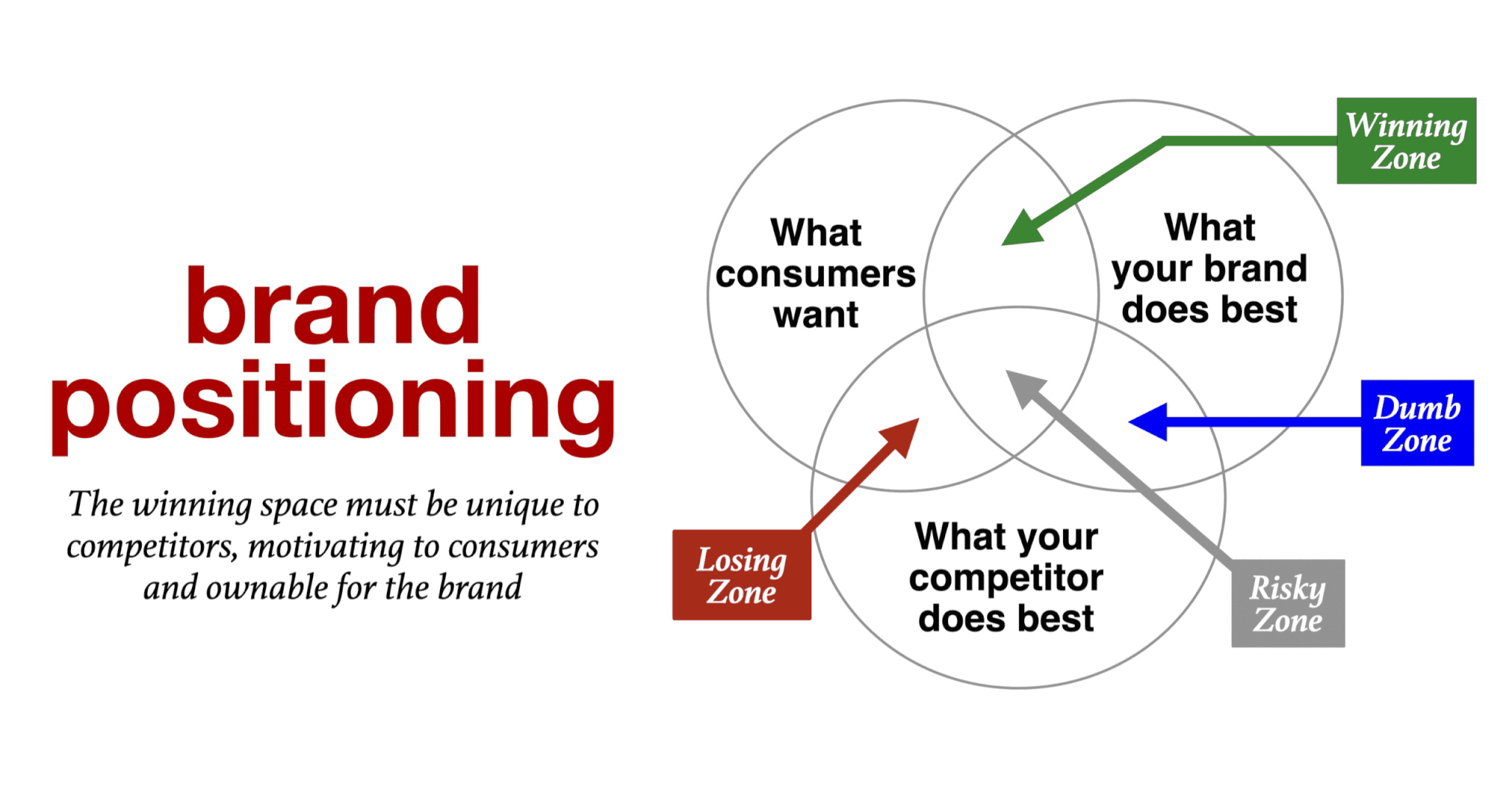A Simple Definition of Brand Positioning
Brand positioning defines how a brand is perceived in relation to competitors. It involves creating a unique image and value proposition to target a specific audience, ensuring the brand stands out and resonates in the marketplace.

Brand positioning is the process of establishing a unique and favorable place for a brand in the minds of consumers relative to its competitors. It involves defining how a brand is perceived, what makes it distinct, and why it is the preferred choice for a particular audience.
What is Brand Positioning?
Brand positioning refers to the strategic approach used to create a specific image and identity for a brand in the marketplace. It aims to differentiate the brand from competitors and ensure that it occupies a distinct and valued place in the minds of target consumers.
Key Elements of Brand Positioning
- Target Audience: Understanding the specific group of consumers the brand aims to reach.
- Unique Selling Proposition (USP): Identifying what makes the brand different and better than competitors.
- Brand Promise: Articulating the key benefits and values that the brand delivers to its customers.
- Competitive Analysis: Analyzing competitors to determine how the brand can stand out and offer something unique.
Why is Brand Positioning Important?
Brand positioning is crucial because it:
- Differentiates the Brand: Helps the brand stand out in a crowded market by highlighting its unique attributes.
- Creates Consumer Perception: Shapes how consumers perceive the brand and its value relative to competitors.
- Guides Marketing Efforts: Provides direction for marketing strategies and messaging to effectively reach and resonate with the target audience.
- Builds Brand Loyalty: Establishes a strong and appealing brand identity that fosters customer loyalty and preference.
Examples of Brand Positioning
- Apple: Positioned as a premium brand known for innovative design and cutting-edge technology.
- Nike: Positioned as a brand that inspires athletes with high-performance products and a powerful “Just Do It” message.
- Tesla: Positioned as a leader in electric vehicles with a focus on sustainability, innovation, and advanced technology.
Brand positioning is the strategic process of defining how a brand is perceived in the marketplace. By establishing a clear and unique position, brands can effectively differentiate themselves, connect with their target audience, and achieve long-term success.
FAQs
What is brand positioning?
Brand positioning is the process of establishing a distinct and favorable place for a brand in the minds of consumers. It involves defining how a brand is different from its competitors and why it is the preferred choice for a specific target audience.
Why is brand positioning important?
Brand positioning is important because it helps a brand stand out in a competitive market by highlighting its unique attributes. It shapes consumer perceptions, guides marketing strategies, and fosters brand loyalty by creating a clear and compelling identity.
What are the key elements of brand positioning?
The key elements of brand positioning include:
- Target Audience: Identifying the specific group of consumers the brand aims to reach.
- Unique Selling Proposition (USP): Defining what makes the brand different and better than competitors.
- Brand Promise: Articulating the core benefits and values the brand offers to its customers.
- Competitive Analysis: Assessing competitors to find ways for the brand to stand out and offer something unique.
How does brand positioning affect marketing strategies?
Brand positioning influences marketing strategies by providing a clear direction for messaging, advertising, and promotional activities. It helps marketers craft messages that resonate with the target audience and differentiate the brand from competitors.
Can you provide examples of successful brand positioning?
Sure! Here are a few examples:
- Apple: Positioned as a premium brand known for its innovative design and high-quality technology.
- Nike: Positioned as a brand that inspires and empowers athletes with its high-performance products and motivational messaging.
- Tesla: Positioned as a leader in electric vehicles, emphasizing sustainability, advanced technology, and innovation.
How do you determine the right position for a brand?
Determining the right position for a brand involves:
- Understanding the Target Audience: Researching consumer needs, preferences, and behaviors.
- Identifying Unique Strengths: Analyzing what sets the brand apart from competitors.
- Conducting Competitive Analysis: Evaluating competitors to find gaps and opportunities.
- Crafting a Clear Brand Promise: Developing a compelling message that communicates the brand’s unique value.
What is the difference between brand positioning and brand identity?
Brand positioning focuses on how a brand is perceived relative to its competitors and how it occupies a unique space in the market. Brand identity, on the other hand, encompasses the visual and verbal elements that represent the brand, such as its name, logo, and design. Positioning is about perception, while identity is about representation.
How often should a brand’s positioning be reviewed?
A brand’s positioning should be reviewed regularly to ensure it remains relevant and effective. Changes in market conditions, consumer preferences, and competitive landscapes may necessitate adjustments. Regular reviews help maintain a strong and effective brand position.
What are common mistakes in brand positioning?
Common mistakes in brand positioning include:
- Lack of Differentiation: Failing to clearly define what makes the brand unique.
- Inconsistent Messaging: Providing mixed or unclear messages that confuse consumers.
- Ignoring the Target Audience: Not aligning the brand’s position with the needs and preferences of the target market.
- Neglecting Competitive Analysis: Failing to analyze competitors and understand the brand’s relative position.
How can a company improve its brand positioning?
To improve brand positioning, a company can:
- Conduct Market Research: Gain insights into consumer needs and preferences.
- Refine the Unique Selling Proposition (USP): Clearly define and communicate what makes the brand special.
- Align Messaging: Ensure that all marketing messages are consistent with the brand’s position.
- Monitor Competitors: Stay informed about competitors and adjust positioning as needed to maintain a competitive edge.
Get in Touch
Website – https://www.webinfomatrix.com
Mobile - +91 9212306116
Whatsapp – https://call.whatsapp.com/voice/9rqVJyqSNMhpdFkKPZGYKj
Skype – shalabh.mishra
Telegram – shalabhmishra
Email - info@webinfomatrix.com
What's Your Reaction?




















.jpg)